 Teaching a course on Social Entrepreneurship
has constantly left us with a problem: it is impossible to define a social
enterprise with myriad forms of incorporation and objectives of entities that
claim to be or perceived as social enterprises. So we usually end up using the
Sankara philosophy of Neti Neti [not
this, not this] to arrive at a description of a social enterprise. In Aravind
Eyecare, we however, found the answer. A social enterprise? Idam Ittham! This is it! There is enough
literature on Aravind - a slightly dated Harvard case, two cases by IIM Ahmedabad
and other writing that puts the essence of the social and the enterprise nature
of the organization. This book ties the loose ends and provides a comprehensive
picture. Given that Pavithra is a family member and very much a part of the
Aravind system one would have thought that there would be issues in dealing
with the difficult questions of succession, inter-generational leadership and
growth. But the authors are candid and take these issues head on.
Teaching a course on Social Entrepreneurship
has constantly left us with a problem: it is impossible to define a social
enterprise with myriad forms of incorporation and objectives of entities that
claim to be or perceived as social enterprises. So we usually end up using the
Sankara philosophy of Neti Neti [not
this, not this] to arrive at a description of a social enterprise. In Aravind
Eyecare, we however, found the answer. A social enterprise? Idam Ittham! This is it! There is enough
literature on Aravind - a slightly dated Harvard case, two cases by IIM Ahmedabad
and other writing that puts the essence of the social and the enterprise nature
of the organization. This book ties the loose ends and provides a comprehensive
picture. Given that Pavithra is a family member and very much a part of the
Aravind system one would have thought that there would be issues in dealing
with the difficult questions of succession, inter-generational leadership and
growth. But the authors are candid and take these issues head on.
Let us unpeel the Aravind model. This model
is about providing choices. There is no verification on affordability. Patients
can choose to pay or take the free treatment. “Zero can be a legitimate price point… these price points are built around a culture that respects every
patient’s right to selection” [p.75]. Aravind overcame the problem of
mis-targeting in cross subsidization by offering the same services [doctors,
technology for treatment], but differing facilities [beds on the floor for free
patients]. During the earlier days the technology, providing intra-ocular
lenses for paying cataract patients and spectacles for non-paying patients made
the difference sharper. But Aravind was not about keeping the differences. It
strived to remove even these differences by investing in research, technology
that brought price points down while being self-sustaining. How did they do it?
 Unlike many non-profit-non-governmental
organisations that have the us-versus-them attitude towards corporate
businesses, Dr. Govindappa Venkataswamy [Dr.V, the founder] and his team had a
never ending curiosity. How does the standardization of McDonalds apply to
cataract? How to ensure the productivity of human resources and physical
infrastructure is used to the maximum? How to cut idle time and utilize the
resources, to ensure a fall in the per-unit cost. “Say an average practitioner uses his surgical microscope 20 times a
month… at Aravind our utilization is actually 20 or 30 times higher. So our
average cost per case is drastically lower than his.”[p.88]. Once that was
achieved, the headroom available for pricing significantly increased. Doctors
were to be used for what they specialize in. For support services there were
others who were trained. Having a large number of interns and trainees brought
enthusiasm, youthfulness and curiosity and cut costs significantly. And unless
there were large numbers, there was no learning for the doctors. They became
better by seeing diverse patients. On the other side there was a big problem of
avoidable blindness. In Madurai. In Tamilnadu. In India. In Africa. Across the
World. “If somebody is blind, that’s our
problem” [p.13] was the Aravind vision. Once the issue was articulated in
this manner, the business model that emerged would blindly chase the blind and
not the bottom line. The problem was immense and it needed to be solved in the
lifetime of Dr.V. This race against could be won only with dedication,
tirelessness and perseverance of climbing the Everest.
Unlike many non-profit-non-governmental
organisations that have the us-versus-them attitude towards corporate
businesses, Dr. Govindappa Venkataswamy [Dr.V, the founder] and his team had a
never ending curiosity. How does the standardization of McDonalds apply to
cataract? How to ensure the productivity of human resources and physical
infrastructure is used to the maximum? How to cut idle time and utilize the
resources, to ensure a fall in the per-unit cost. “Say an average practitioner uses his surgical microscope 20 times a
month… at Aravind our utilization is actually 20 or 30 times higher. So our
average cost per case is drastically lower than his.”[p.88]. Once that was
achieved, the headroom available for pricing significantly increased. Doctors
were to be used for what they specialize in. For support services there were
others who were trained. Having a large number of interns and trainees brought
enthusiasm, youthfulness and curiosity and cut costs significantly. And unless
there were large numbers, there was no learning for the doctors. They became
better by seeing diverse patients. On the other side there was a big problem of
avoidable blindness. In Madurai. In Tamilnadu. In India. In Africa. Across the
World. “If somebody is blind, that’s our
problem” [p.13] was the Aravind vision. Once the issue was articulated in
this manner, the business model that emerged would blindly chase the blind and
not the bottom line. The problem was immense and it needed to be solved in the
lifetime of Dr.V. This race against could be won only with dedication,
tirelessness and perseverance of climbing the Everest. This task could not be measured by
pay-packets, bonuses and stock options. This business model of Aravind explained
what could tick. At one end was a well-knit [almost joint] family who supported
each other and lived for a common cause, led by the patriarch Dr.V. Nobody
dared to question him. He came with a moral superiority. That was the team. At
the other end was spiritualism he brought that ensured moral suation. That was motivation.
Dr.V could easily switch between the writings of Aurobindo and the business
model of Burger King. It was seamless. These provided an operational framework.
As one of the volunteers summed up “We
need to do what we need to do attitude. No cheesy, frou-frou notions of doing
well by doing good’. It was kind of just – doing.”[p.71].
It was not a charitable operation running on external grant funding. “The founders did not want the eyesight of
the community held ransom by external resources” [p.83]. There was a
single-minded consciousness that resources were to be generated internally and
accruals would be used for operations, and growth.
This task could not be measured by
pay-packets, bonuses and stock options. This business model of Aravind explained
what could tick. At one end was a well-knit [almost joint] family who supported
each other and lived for a common cause, led by the patriarch Dr.V. Nobody
dared to question him. He came with a moral superiority. That was the team. At
the other end was spiritualism he brought that ensured moral suation. That was motivation.
Dr.V could easily switch between the writings of Aurobindo and the business
model of Burger King. It was seamless. These provided an operational framework.
As one of the volunteers summed up “We
need to do what we need to do attitude. No cheesy, frou-frou notions of doing
well by doing good’. It was kind of just – doing.”[p.71].
It was not a charitable operation running on external grant funding. “The founders did not want the eyesight of
the community held ransom by external resources” [p.83]. There was a
single-minded consciousness that resources were to be generated internally and
accruals would be used for operations, and growth.
How does one ensure that everybody gets
the same treatment, irrespective of payment? The systems at Aravind are designed to operationalize certain core
principles. So to ensure equity of care .. the organization intensively
monitors clinical outcomes across paid and free services, and all its surgeons
are rotated between free and paying patients”. [p.115].
The ruthlessness in being self-critical
on operations, on tasks not achieved, on ambition is the stuff that dream
enterprises are made of. The story of Aravind is all about this purpose. The
maxim is do the work, resources [money] will follow. The story of how one
family could produce so many eye surgeons, get them all to work in difficult
conditions and rope in their spouses and grow at a pace that would find a
private equity guy salivate is the stuff that Aravind is made of. It has all
the ingredients of an ideal social enterprise. Dynamic leadership, audacious
vision, dedicated team, operations that are clinically precise and superb
implementation and decision making driven by sound business sense and
spirituality. So what happens when the leadership passes to the next generation,
when centrality of decision-making moves away from conviction of one person to
systems, when a perfect social enterprise faces growth and inter-generational
shift?
 The cracks set in. Once the
organization is large it brings in hierarchies, it is complex to manage and it
needs sufficient funding just to ensure the support systems are in place. The
next generation of leadership does not own the passion, it is handed down.The
world around has significantly changed. How does the organization respond to
these changes? If others embraced spirituality would it help? Would it sound
hollow?
The cracks set in. Once the
organization is large it brings in hierarchies, it is complex to manage and it
needs sufficient funding just to ensure the support systems are in place. The
next generation of leadership does not own the passion, it is handed down.The
world around has significantly changed. How does the organization respond to
these changes? If others embraced spirituality would it help? Would it sound
hollow?
With the passing of Dr.V, these questions
haunt the next generation. The decisions have to be taken by them, and they
cannot look to the wise counsel of the old man. The frustration shows: This
large scale model just isn’t sustainable.. A lot of people don’t want to deal
with the heat, the wait and the crowd. We’re turning into a hospital for the
masses.[p.255]. The arguments are that the bottom of the pyramid itself is
moving up. There is also consciousness that there are specialized eyecare
hospitals that are taking away the paying patients. Should the model of getting
more and more patients through eye camps be done away with? How does the
imperative of the changed external environment, changed leadership and
aspirations of the ‘poor’ patients to have quality eyecare – not only in
treatment but also facilities that are not differentiated between the haves and
the have-nots? Is the traditional stance
on self-reliance pointlessly restrictive? [p.276].
The book asks the right questions,
articulates the dilemma of social enterprises come up only when the visionary
is no longer around. When the seemingly unreasonable and convoluted logic of
business and spirituality does not work, the articulation has to be on more
concrete terms. Aravind has effectively served the cause it set out to in 1976
but the challenges of re-definition are thrown up now. Irrespective of how the
present leadership responds, it faces a daunting task of living up to the image
and the vision of Dr.V. An impossible and frustrating task that is fraught with
the risk of being accused of mission drift. That phase of Aravind has started
and it will be watched carefully.
 Pavitra and Suchitra have woven a
wonderful tale of Aravind and bundled all these issues into a highly readable
book. If one needs to understand the unreasonableness and complexity of a
social enterprise, this is the book to read.
Pavitra and Suchitra have woven a
wonderful tale of Aravind and bundled all these issues into a highly readable
book. If one needs to understand the unreasonableness and complexity of a
social enterprise, this is the book to read.
Infinite Vision
How Aravind Became the World’s Greatest Business Case for Compassion
Pavithra K Mehta and Suchitra Shenoy
Collins Business
pp.269. Price Rs.499.






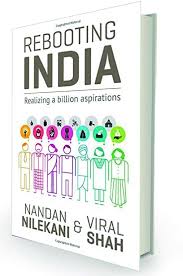








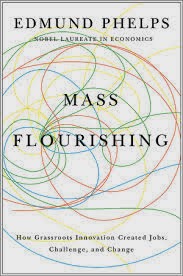









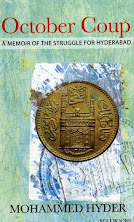

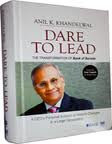









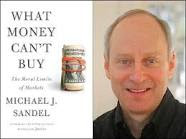


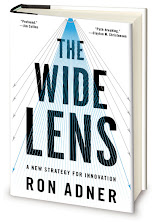

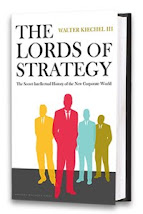











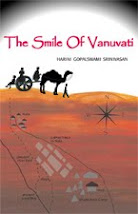


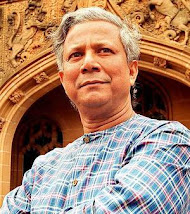
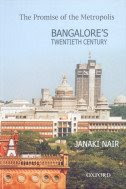




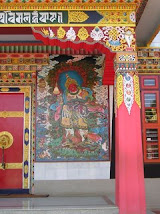


![Hyderabad: A Book [or two] and A Movie](http://3.bp.blogspot.com/_mxWA9ZVkKhQ/S0vnLAO90CI/AAAAAAAABYM/WgbSbAcAaEk/S214/luther1.0.jpg)

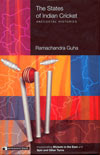





![Two Lives [and this is not about Vikram Seth]](http://1.bp.blogspot.com/_mxWA9ZVkKhQ/S0vjkyDYRvI/AAAAAAAABXM/mJGK-_gZiNg/S214/mansur.jpg)





No comments:
Post a Comment